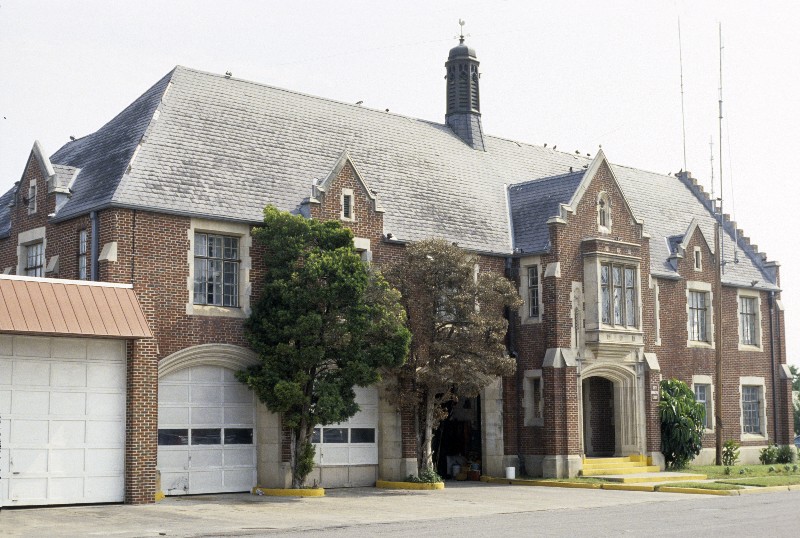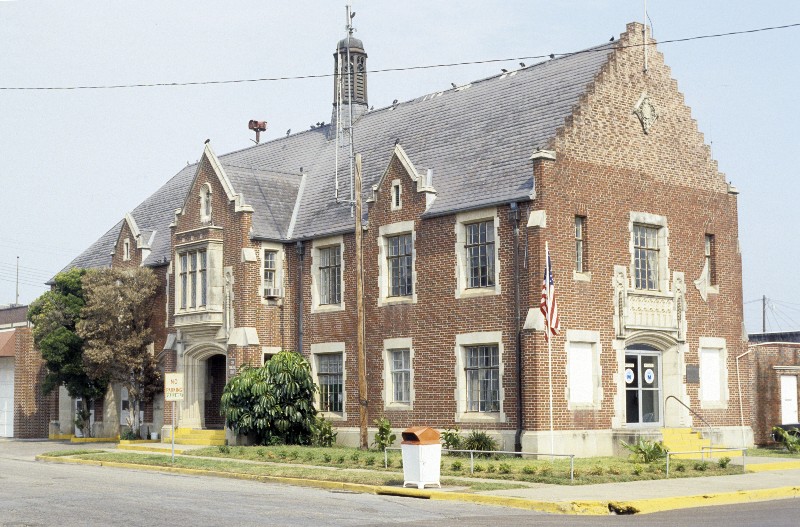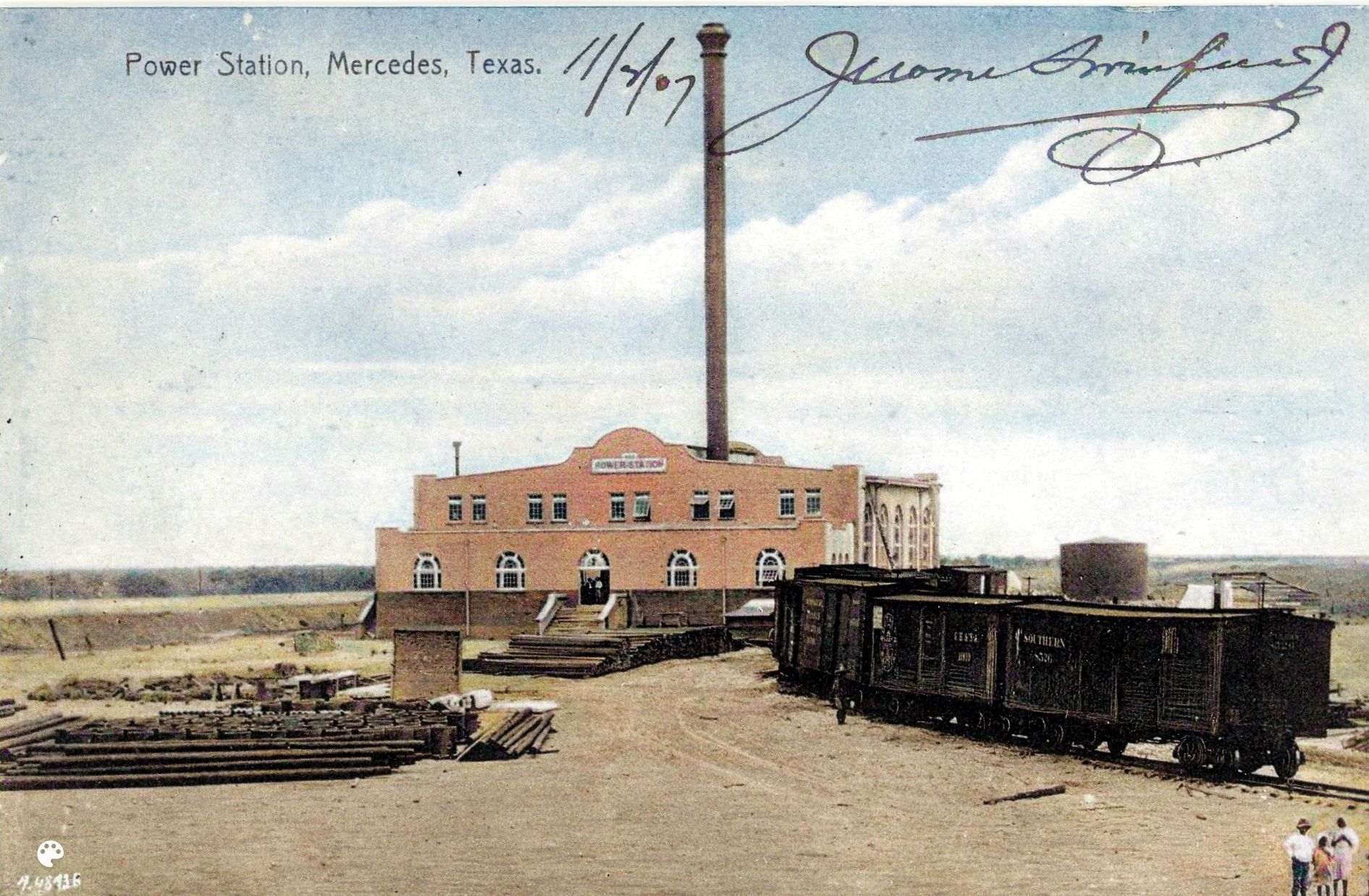 J003
1907
J003
1907
The American Rio Grande Land and Irrigation Company had a grand plan to transform the Rio Grande Valley region into an agricultural oasis. The first step was to construct an electric power plant to pump water from the Rio Grande River into irrigation canals. The plant's coal-fired steam engines began generating electricity for the pumps in 1906, and also provided power to Mercedes's homes and businesses. Mercedes was the first city within a hundred-mile radius to have electric lights. Even Brownsville, a much larger city, did not have electricity until 1908. Gulf Coast magazine wrote in 1906 these words. Within the electric power station's four massive walls are housed the four great engines that will provide the power for the stupendous irrigation scheme that is the foundation of the company's activity, and the various and varied activities that will surely follow in later years. [22]
View Enlarged
View Library
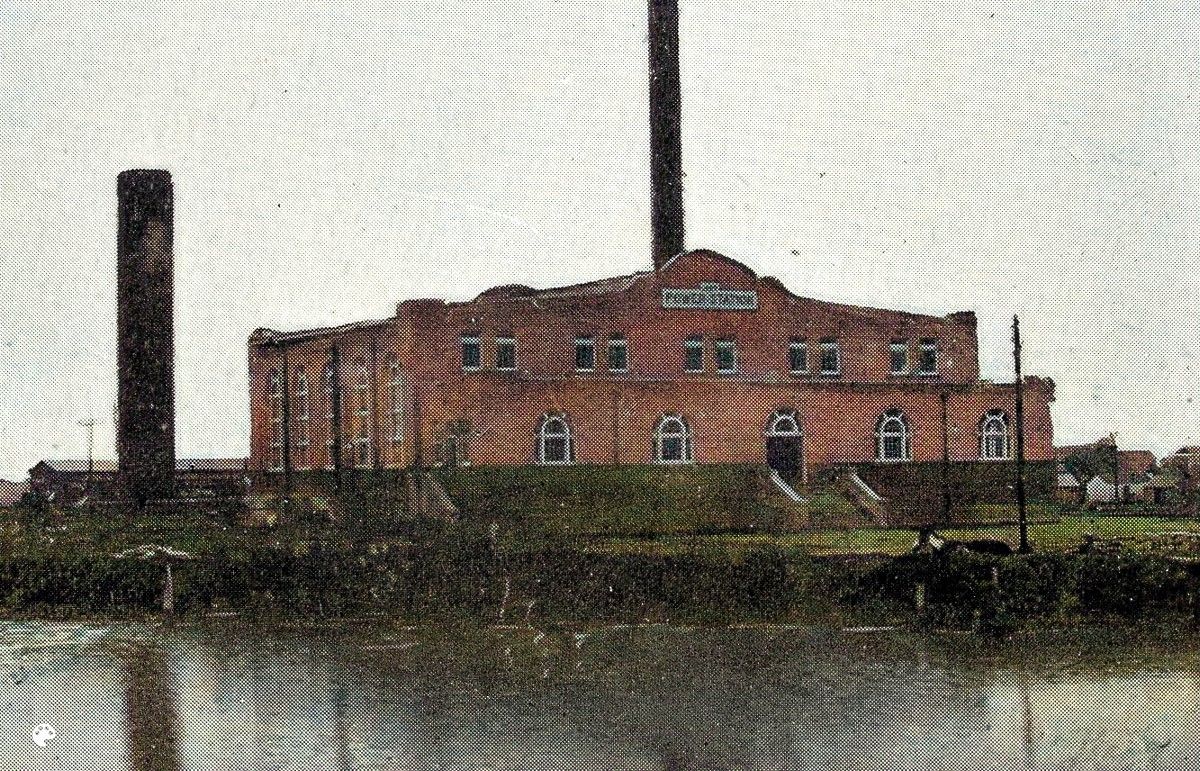 E010
Mercedes Power Plant Generated Electricity from Steam 1909
E010
Mercedes Power Plant Generated Electricity from Steam 1909
The American Rio Grande Land and Irrigation Company established the Mercedes Electric Company in 1908 to manage the power plant. In 1915, the company was sold to investors who installed a larger 100 horsepower engine and incorporated as the Mercedes Water, Light and Power Company.
The company was sold again in 1922 to the Valley Electric and Ice Company. Although they made many improvements, the plant could not meet the ever-increasing demand for electrical service. The plant ceased operations in 1924 when a Valley wide transmission network, or grid, made more reliable electricity available to Mercedes homes and businesses.
View Enlarged
View Library
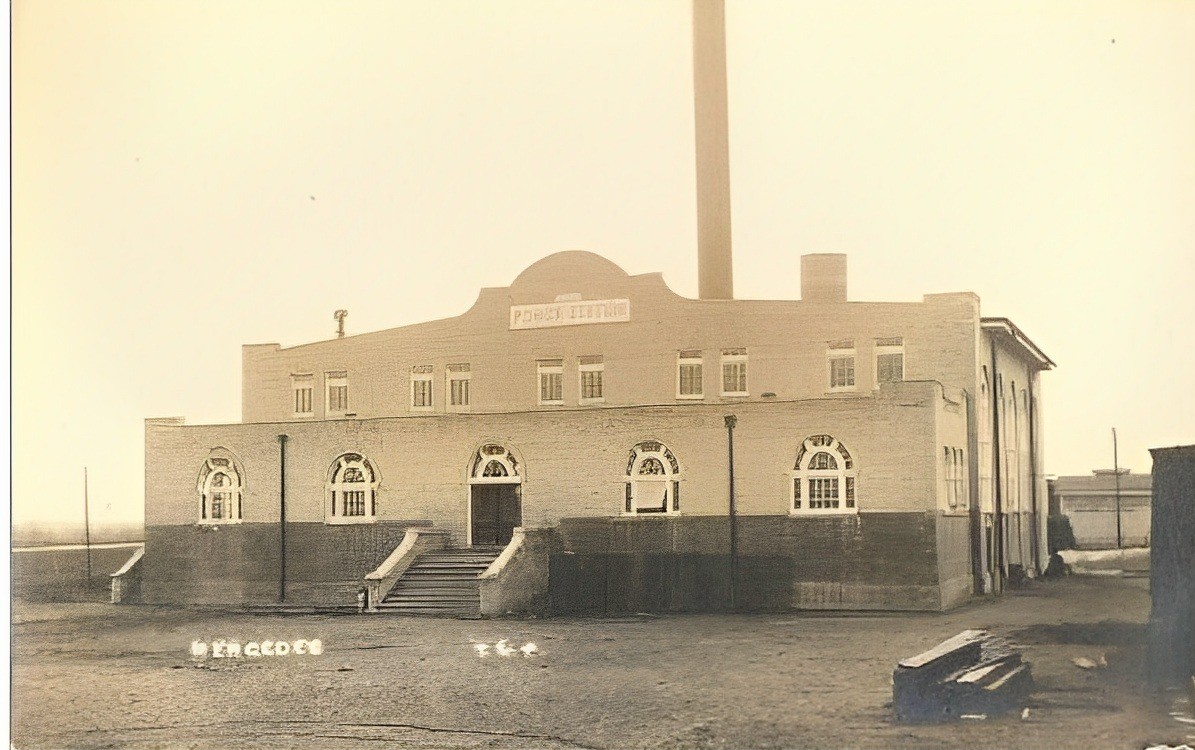 R127
Few People Recognize the Massive Structure That Still Stands in Mercedes 1906
R127
Few People Recognize the Massive Structure That Still Stands in Mercedes 1906
The Mercedes Power Plant stopped generating electricity nearly a century ago, in 1924. Today, most Mercedes citizens are unaware of the history of the hulking structure standing alongside the Main Canal at 2nd Street.
The building has served many purposes over the decades since electricity production ceased. It housed the Citrus Exchange in the 1930s, the Stokely Brothers fruit and vegetable plant in the 1940s, and has also been used as a salvage goods store, prize fight venue, and housing for soldiers. Today, the once-proud building, still with its Mission Revival parapets and arches, stands unused and boarded up on the banks of the Main Canal. [33][34]
View Enlarged
View Source Article
 U130
Mercedes Passenger Depot 1910
U130
Mercedes Passenger Depot 1910
The train depot stood at the north end of Missouri Avenue. This view shows two horse buggies and several people on the depot platform. The surrounding grounds are ungroomed.[98]
View Enlarged
View Library
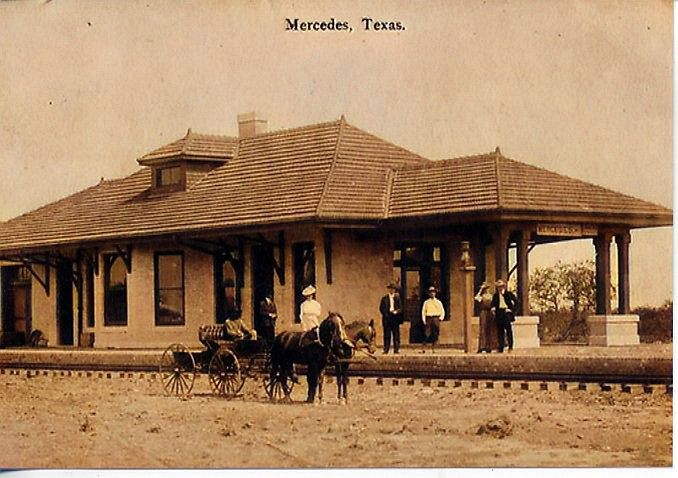 B108
Mercedes Railroad Depot First on Valley Railroad Branch 1907
B108
Mercedes Railroad Depot First on Valley Railroad Branch 1907
The Mercedes railroad spur in the first half of the 20th Century was Valley focal point for shipment of citrus and vegetables to markets nationwide. Before the railroad was established, large scale production of fresh produce was not feasible in the Valley since there was no way to get products to markets quickly. A temporary station platform was used until this permanent Railroad Depot was completed around 1907. One pleased passenger wrote of the new depot 'its a beauty and up to date in every way'.
View Enlarged
View Source Article
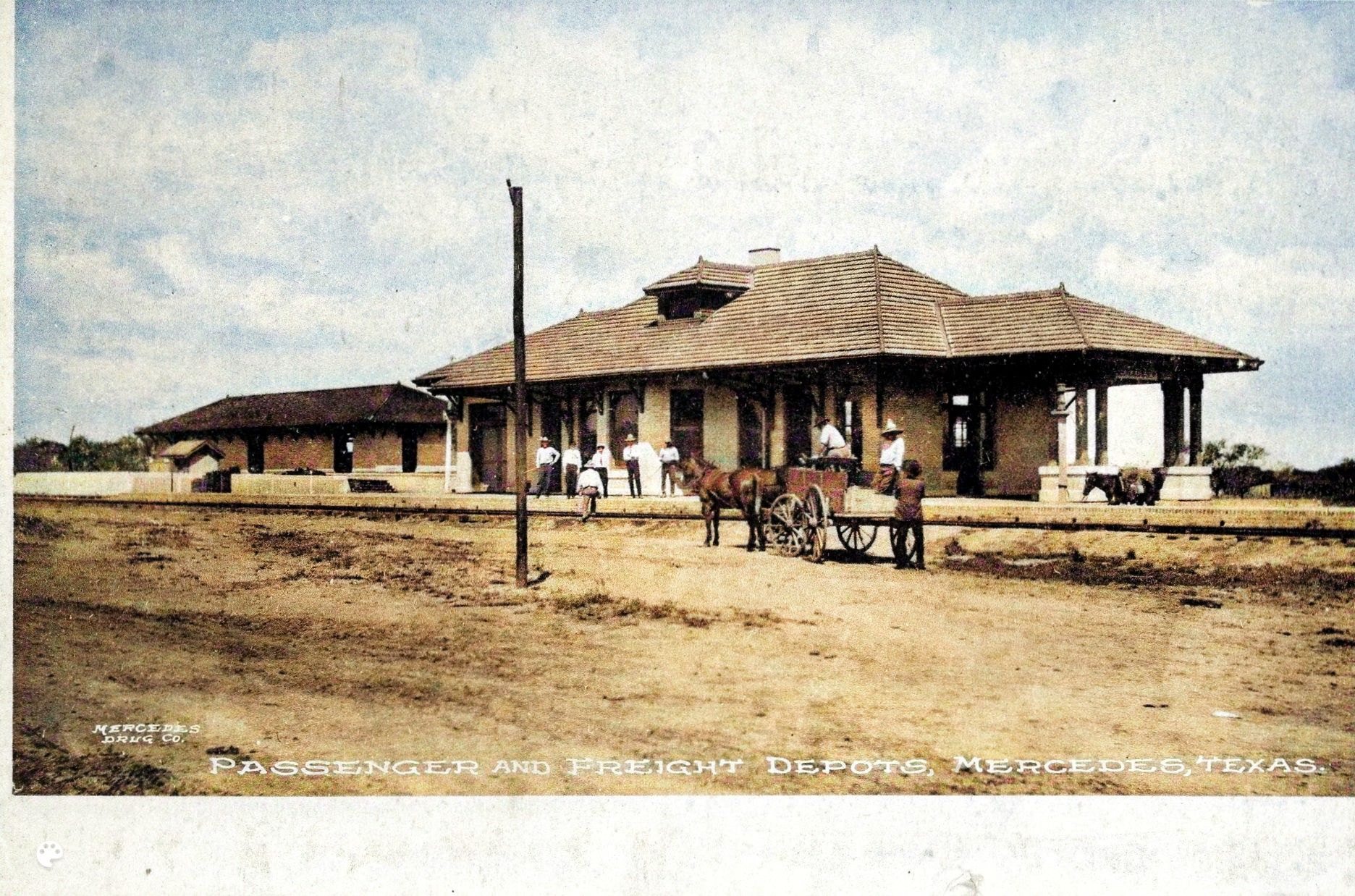 E004
Mercedes Railroad Depot Completed in 1907 1914
E004
Mercedes Railroad Depot Completed in 1907 1914
The Passenger and Freight Depot opened in 1907, the same year that Lonsboro was renamed to Mercedes. It was the most impressive structure in the area, and many people rode the train to Brownsville and back for entertainment. The train station was first established on July 8, 1904, as the first station on the San Fordyce Branch of the St. Louis, Brownsville, and Mexico Railway. It was served by a temporary platform until the depot was completed. [28]
View Enlarged
View Library
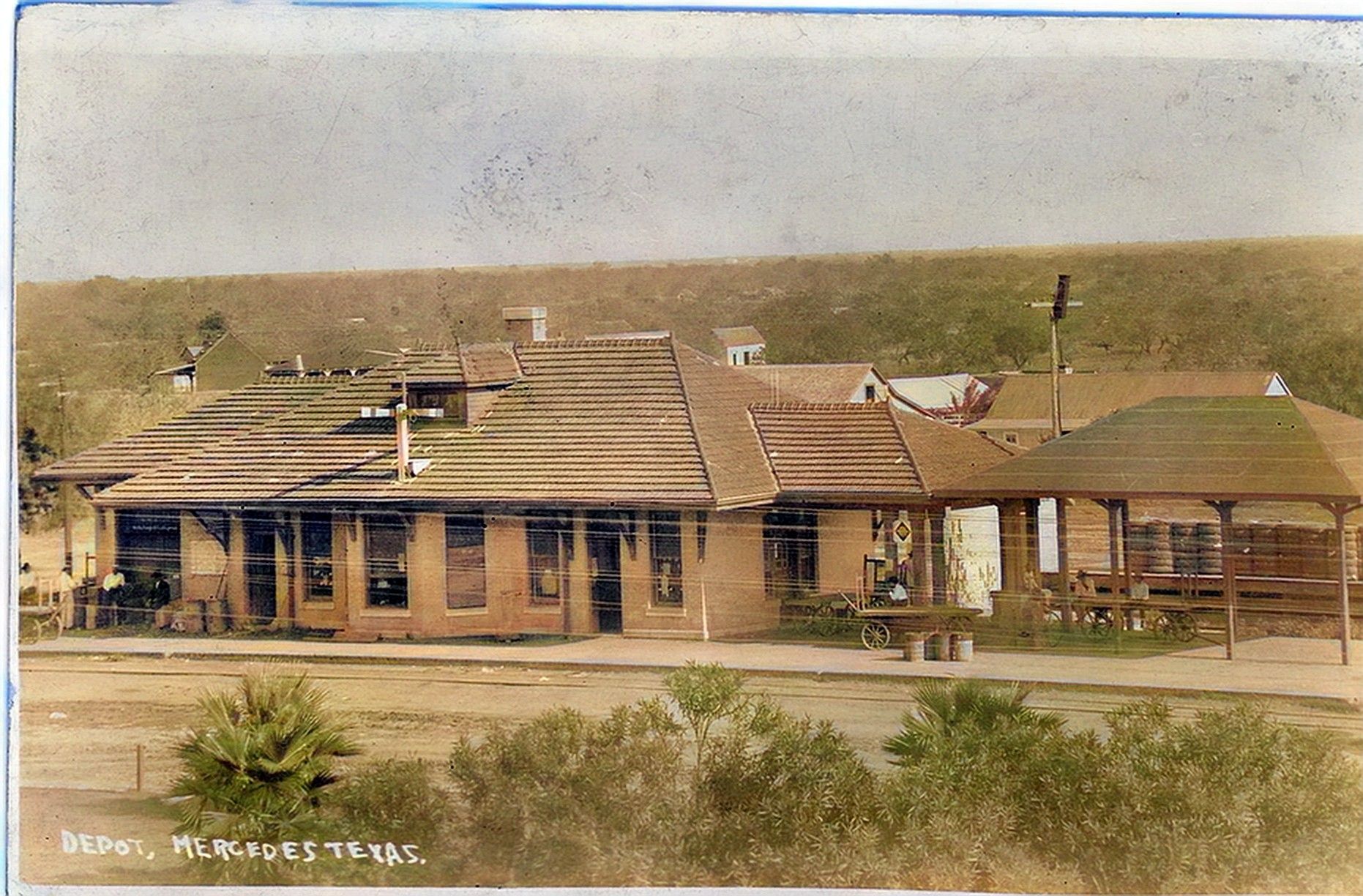 R018
Mercedes Railroad Depot Provided Shipping for Agriculture 1906
R018
Mercedes Railroad Depot Provided Shipping for Agriculture 1906
The Mercedes Railroad Depot was built to bring prospective land buyers and other passengers to the Valley, but was also important for transporting agricultural products to northern markets. Mercedes City Park and the Mercedes Hotel were located adjacent to depot, welcoming travelers to the town.
Mercedes author and historian G.G. Garcia recalls that during wartime people would stroll around the park plaza waiting for the evening train to post letters and receive soldiers coming home for their final rest. Women, wearing shawls and silk rebozos, and smelling of flowers for the dead, crowded the train to receive the flag-draped coffins'. [92]
View Enlarged
View Library
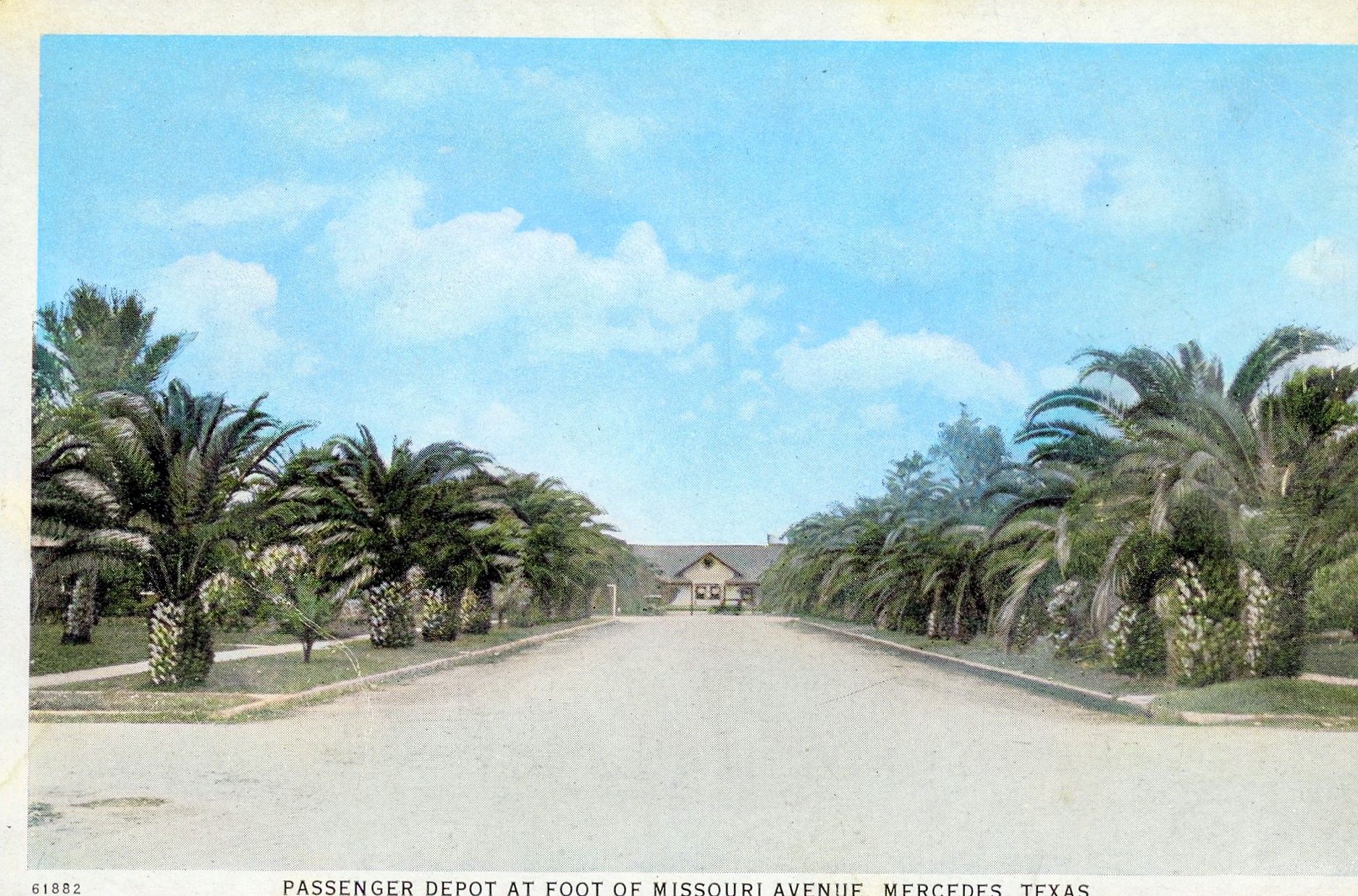 V001
Passenger Depot Served 50 Years Demolished in 1968 1930
V001
Passenger Depot Served 50 Years Demolished in 1968 1930
This postcard depicts a beautiful view looking north on Missouri Street towards the Mercedes Railroad Depot. The Missouri Pacific Railroad (MoPac) purchased the railroad in 1924 and demolished the original depot to construct the new one pictured here in 1928. The depot provided passenger service throughout the Great Depression and both World Wars, but business began to decline in the late 1940s. In its final years, the train was part of the Spider Web passenger lines that crisscrossed the valley. The last passenger train left Mercedes on August 11, 1955, marking the end of the era of passenger trains in the Rio Grande Valley. [95] MoPac finally demolished the depot in 1968.
View Enlarged
View Library
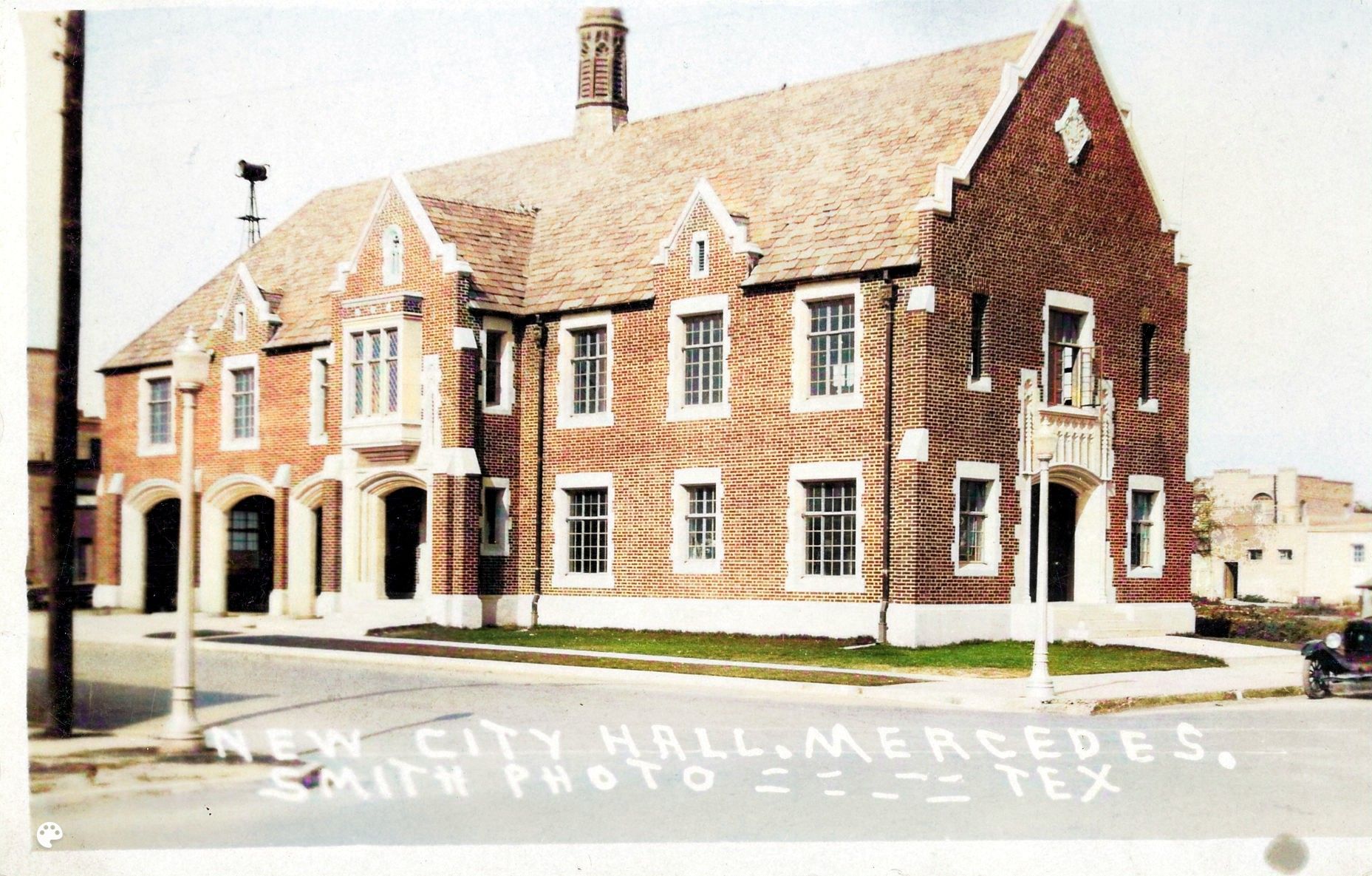 I007
German Gothic Style Mercedes City Hall Was Constructed in 1928 1930
I007
German Gothic Style Mercedes City Hall Was Constructed in 1928 1930
The German Gothic style structure was built in 1928 for the Mercedes City Hall and fire station. Constructed of red brick, it features a copper cupola to house the fire alarm, cast stone detailing, and a gabled roof. The second floor was a town meeting room and firemen's dormitory. The building was the third of five Mercedes area structures designed by architect R. Newell Waters. [4] The building still stands today and provides administrative offices for the City of Mercedes.
View Enlarged
View Library
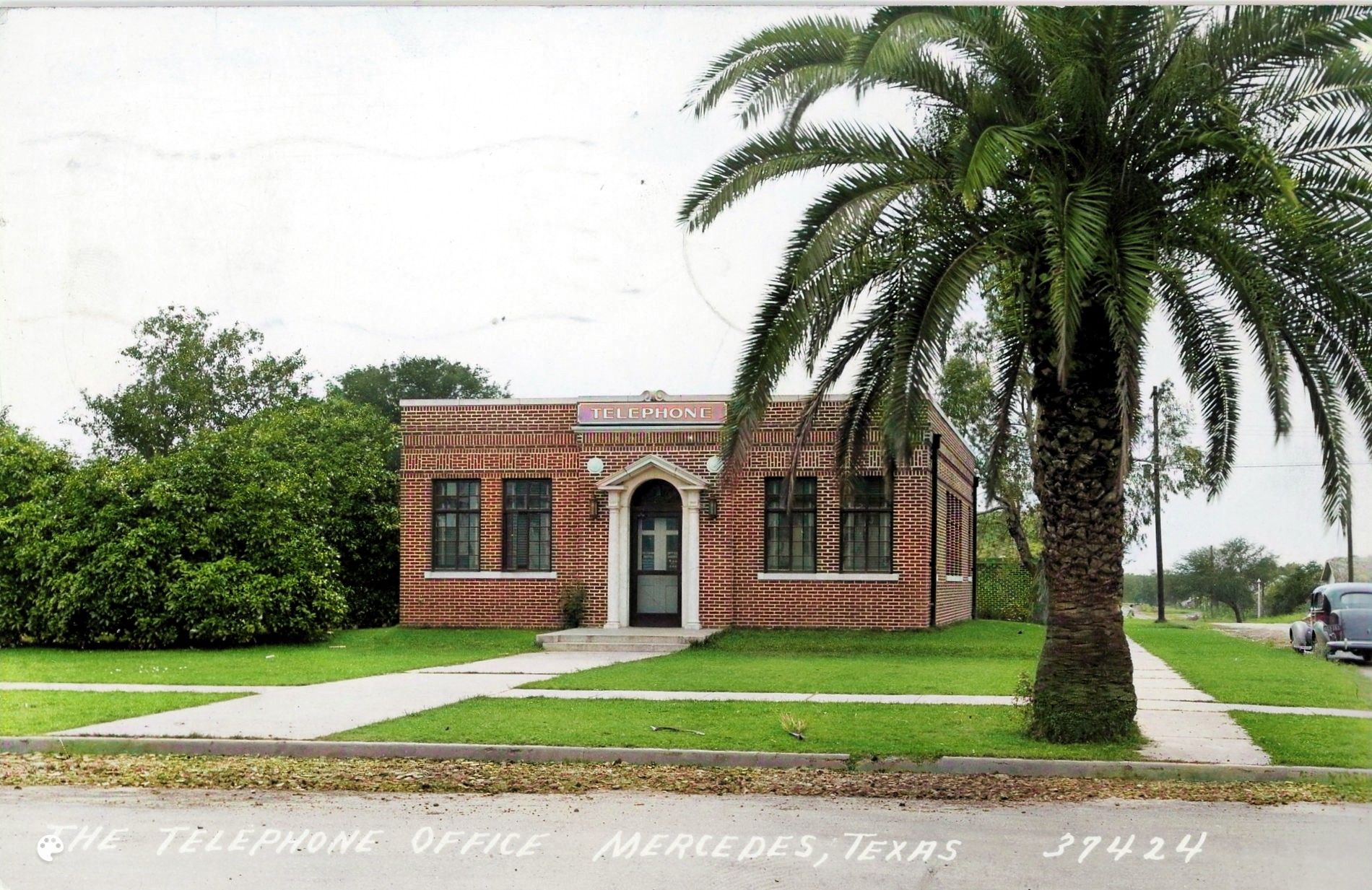 I002
The Telephone Office Building on Missouri Avenue in Mercedes 1940
I002
The Telephone Office Building on Missouri Avenue in Mercedes 1940
The appealing red-brick Telephone Office Building was constructed on Missouri Avenue. It was the third structure in the Mercedes area designed by architect R. Newell Waters. [4]The building housed the local telephone exchange and the Rio Grande Valley offices for the Telephone Company. It was 34 feet by 50 feet in size and featured a large garage in the rear. The cost to build was approximately $12,000. The structure was demolished at some point and replaced by a new AT&T building that now occupies the same site on Missouri Avenue. As of 2023, four other Newell Waters-designed buildings remain standing in Mercedes. [55]
Until the 1970s, many residents living in rural areas of Mercedes had 'party line' phone service which shared a phone number with other households. Users could overhear conversations if they picked up the phone while it was being used by a neighbor.
View Enlarged
View Library
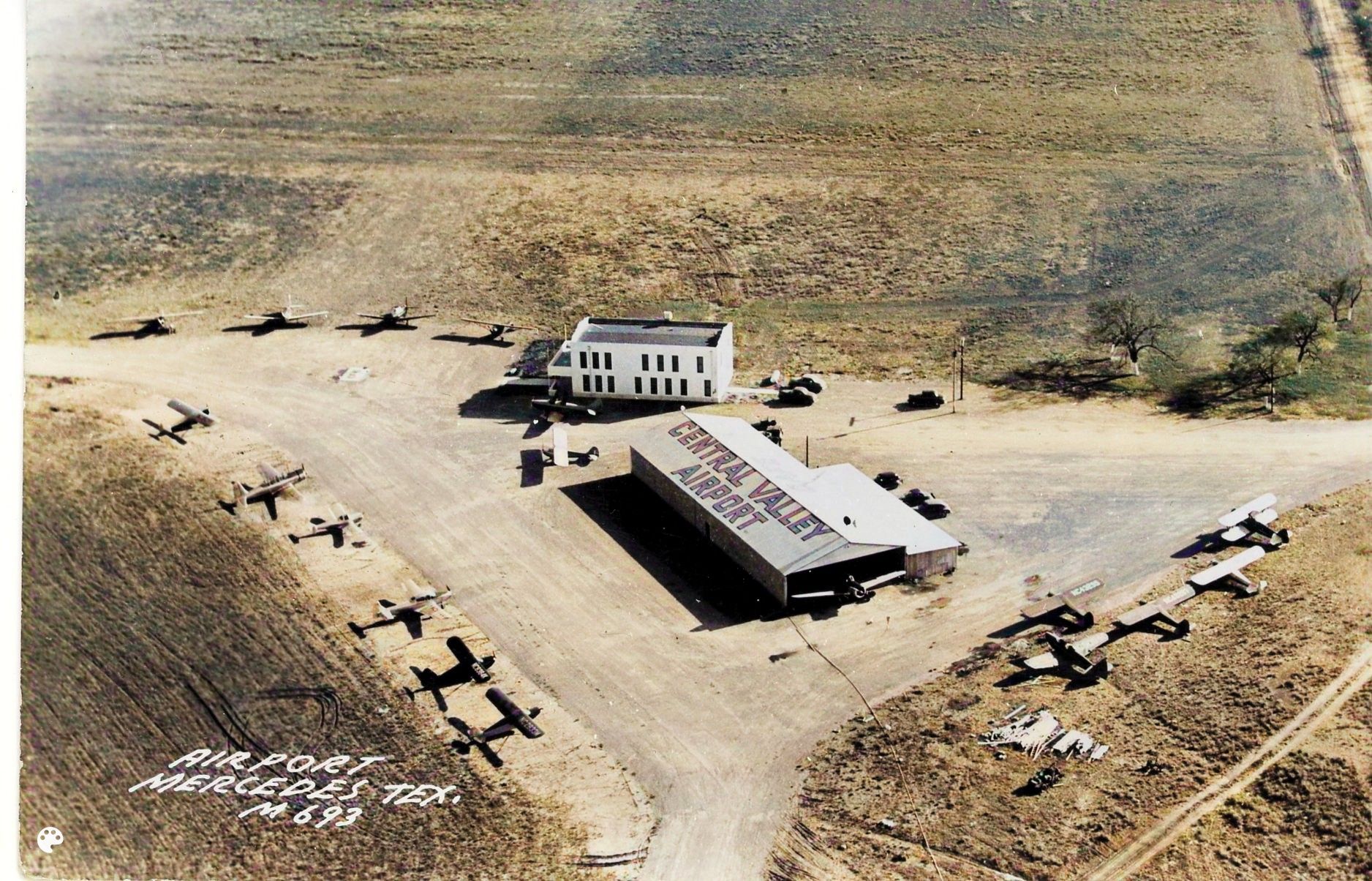 L020
Central Valley Airport Served Small Aircraft, Crop Dusters, and Historic Fighter Planes 1950
L020
Central Valley Airport Served Small Aircraft, Crop Dusters, and Historic Fighter Planes 1950
Central Valley Airport, a small airport just north of Mercedes, opened in the 1920s. In the late 1950s, Lloyd Nolen, a World War II pilot and Mercedes resident, purchased the airport. He established an organization that acquired and restored World War II fighter planes and other historic aircraft. They hosted annual air shows for many years. In 1963, Sports Illustrated Magazine described as: 'Out of the sun-bleached skies above the Rio Grande Valley comes the whine and snarl of aerial ghosts, a priceless handful of World War II fighter planes rescued from rusty oblivion by a group of nostalgic pilots. ' The organization later relocated to Dallas and became the Commemorative Air Force. The small airport still serves in the original location, now called Old Reb Airport. [11] [21] [46]
View Enlarged
View Library
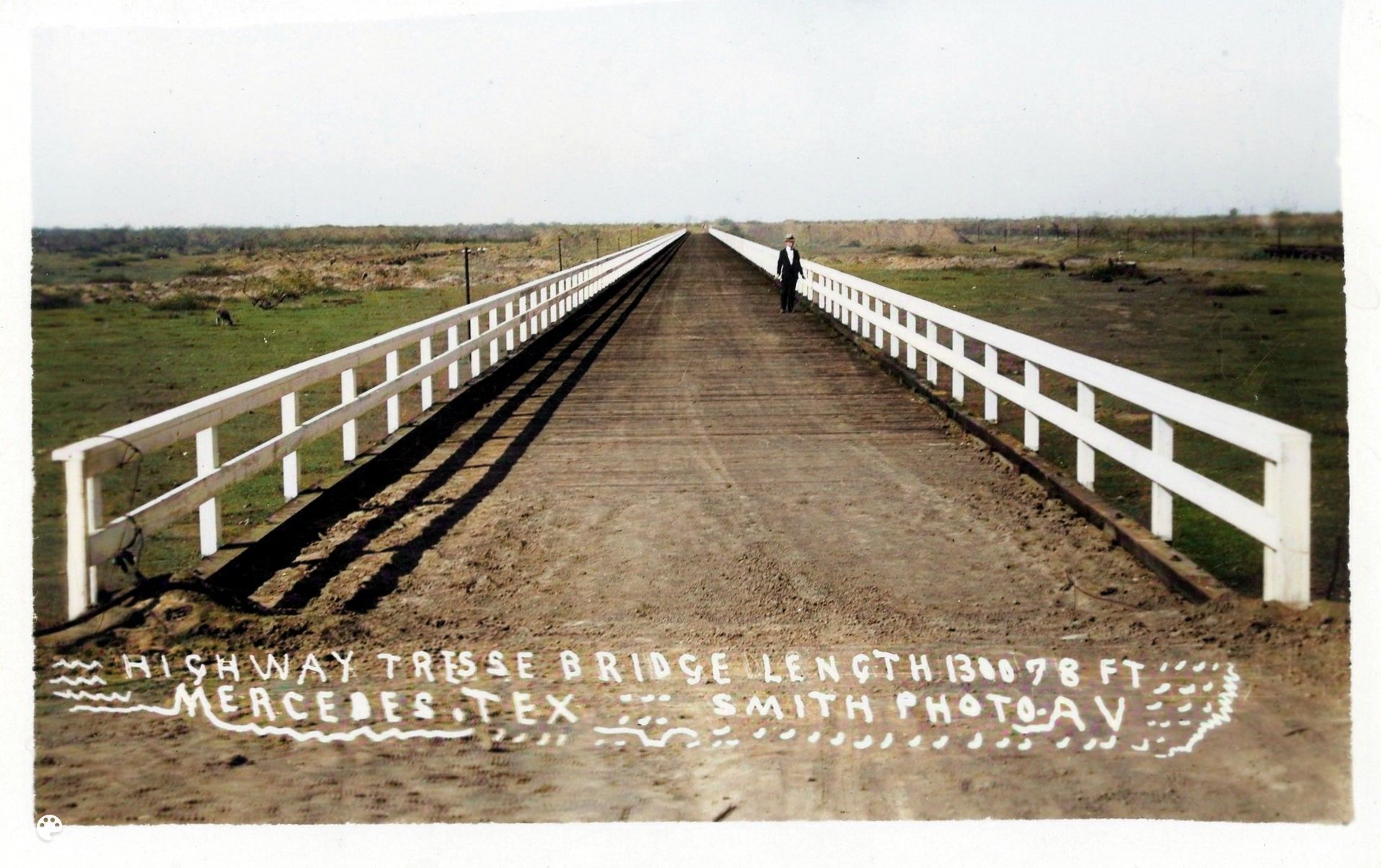 I008
Highway Truss Bridge Spans Wide Ravine in Mercedes Floodway 1930
I008
Highway Truss Bridge Spans Wide Ravine in Mercedes Floodway 1930
This highway truss bridge was built with wooden planks and post supports. However, the caption's length measurement of 130078 feet is unlikely, as this would be almost 25 miles. The bridge's location is not labeled and is unknown. It appears to span a large ravine, which is likely the Arroyo Colorado. The bridge was most likely located on the west side of what is now Business Highway 83 entering Mercedes.
View Enlarged
View Library
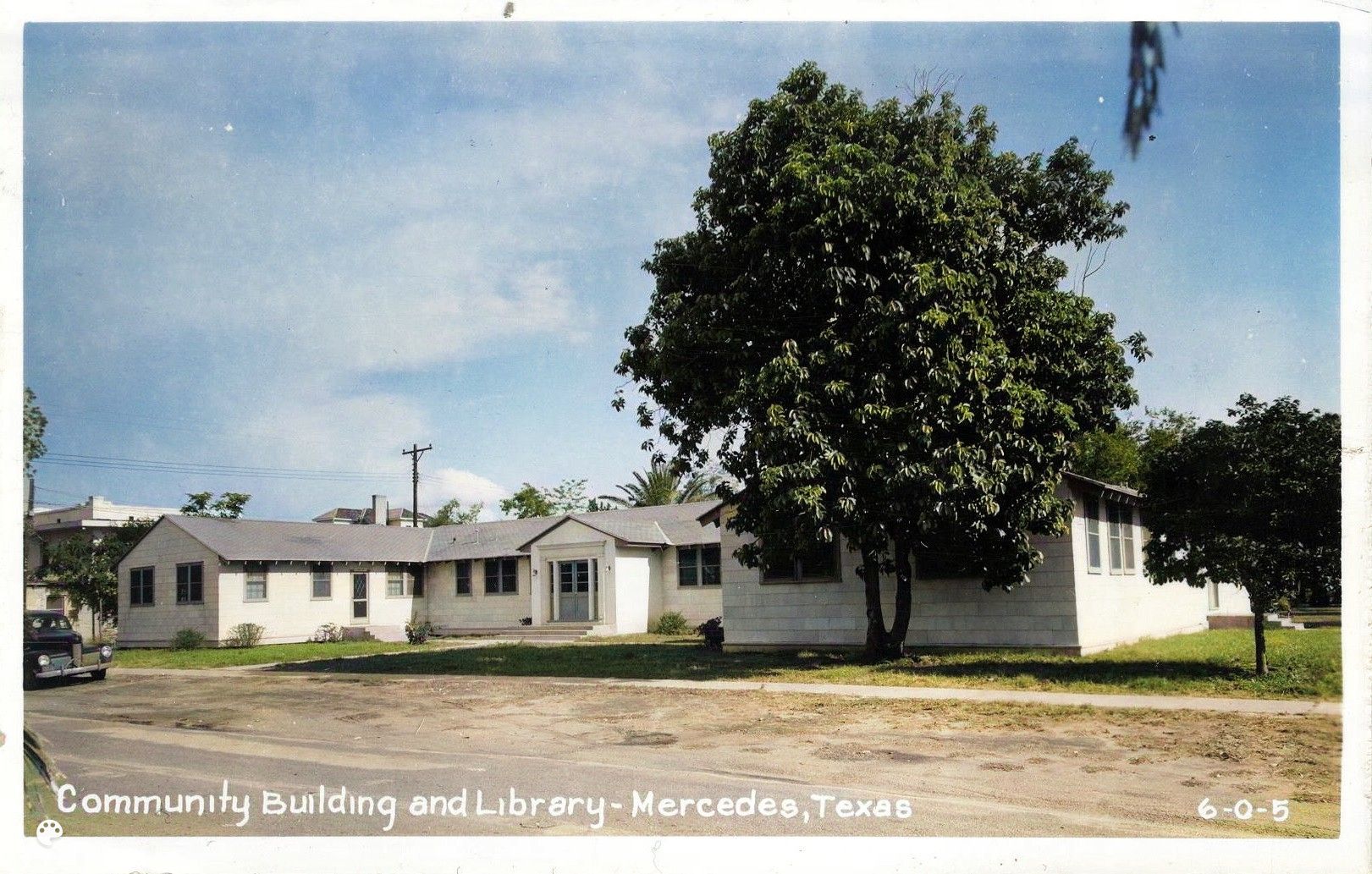 F006
Mercedes Community Library was Once Military Building 1950
F006
Mercedes Community Library was Once Military Building 1950
After WWI, many Camp Mercedes and Camp Llano Grande buildings were repurposed for civilian use. This postcard has a picture of a soldiers barracks which was moved from Camp Mercedes to 3rd Street and used as the public library and community building until the Hector G. Garcia library was completed in 1970 . According to local historian G.G. Garcia, the public library had previously been housed in the Federated Building on Third Street. [92] The old barracks are still in use today, but they now serve as multifamily housing. Some of the residences on Iowa Street or Mercedes, which are still occupied today, are also repurposed buildings from Camp Llano Grande.
View Enlarged
View Library













